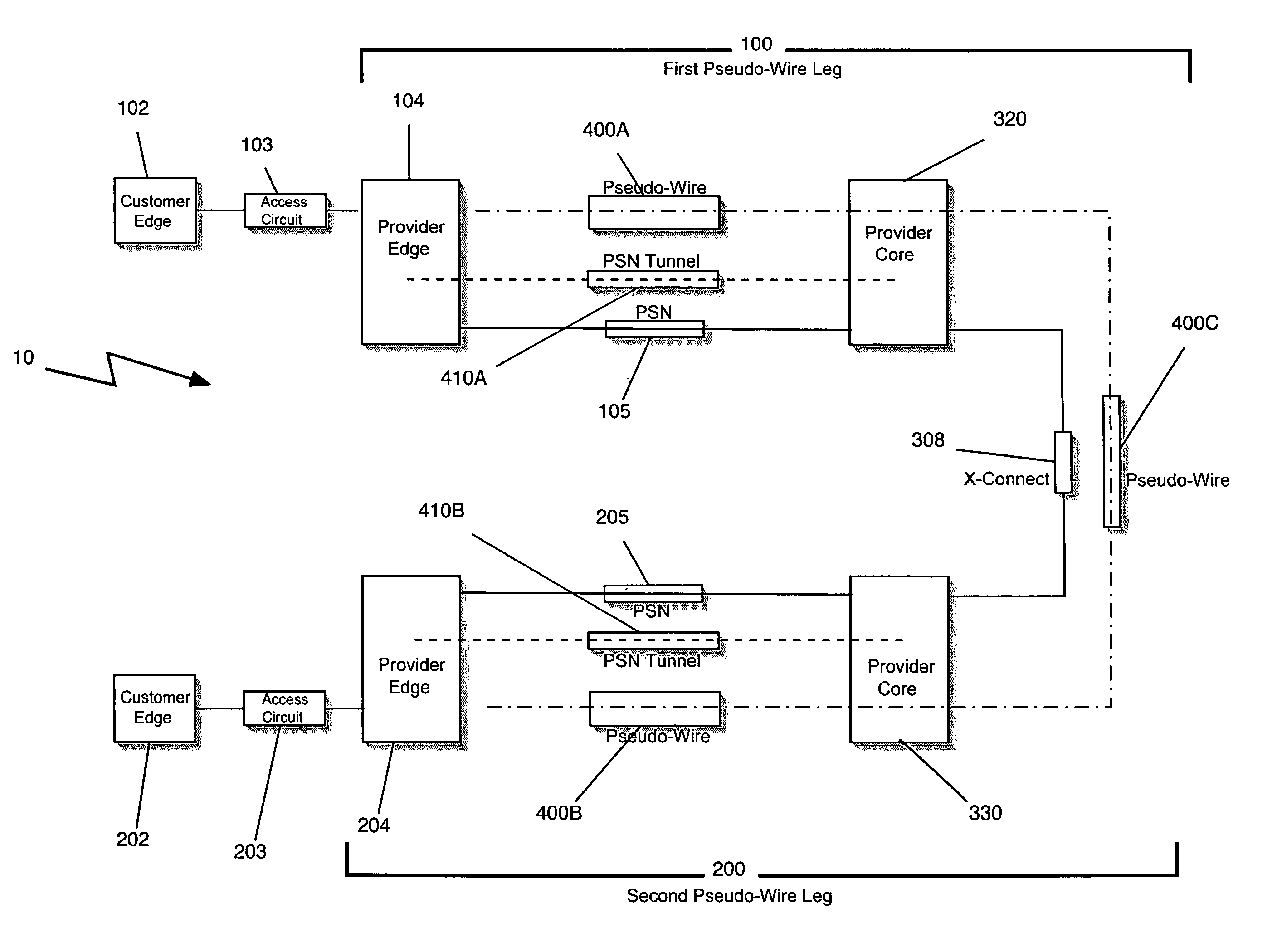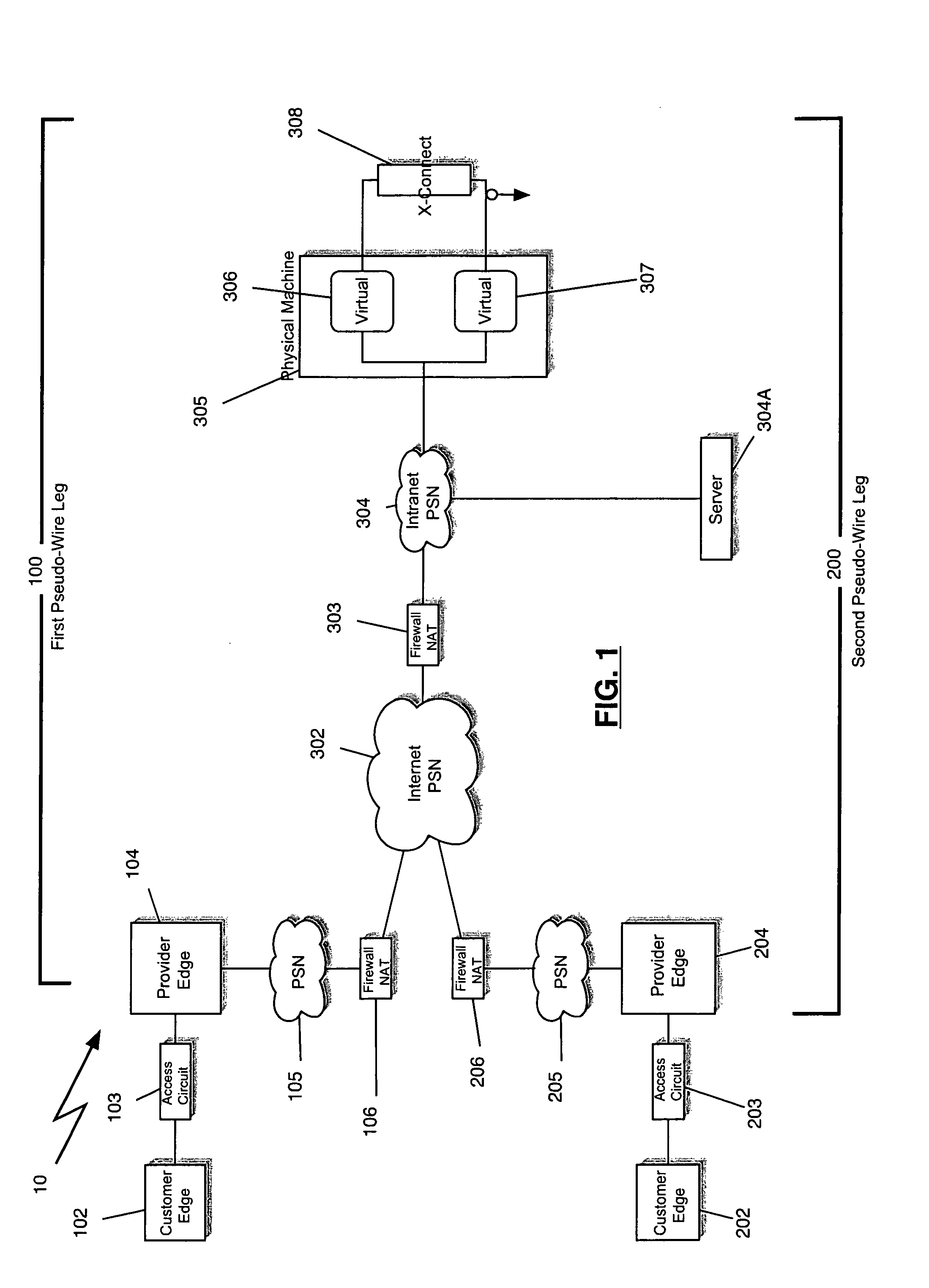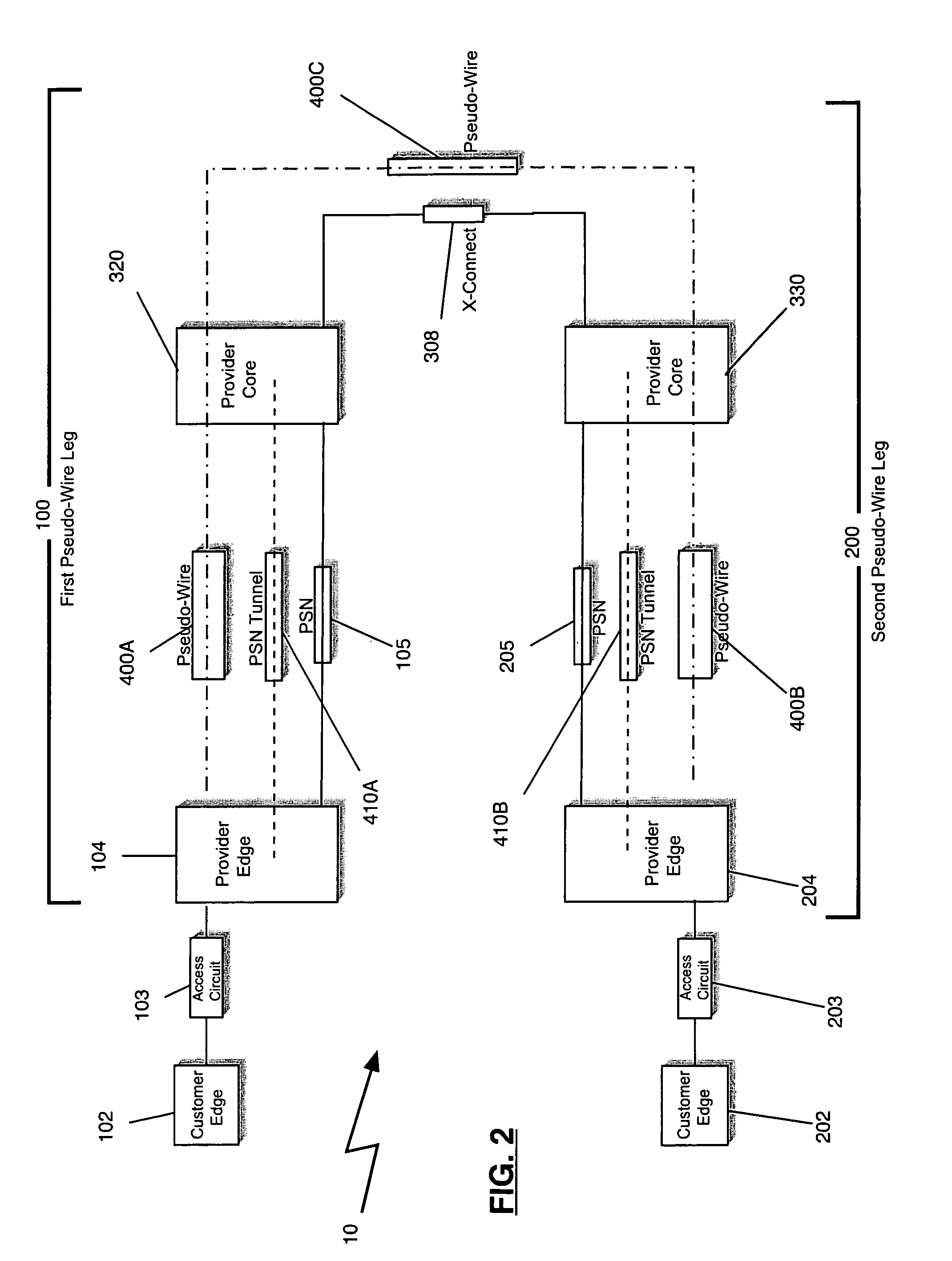Method and system for layer-2 pseudo-wire rapid-deployment service over unknown internet protocol networks
a pseudo-wire and internet protocol technology, applied in the field of digital telecommunications, can solve problems such as frame collisions, data link protocols without acknowledgments, and transfer can be reliable or unreliabl
- Summary
- Abstract
- Description
- Claims
- Application Information
AI Technical Summary
Benefits of technology
Problems solved by technology
Method used
Image
Examples
Embodiment Construction
[0052]Reference will now be made in detail to the present preferred embodiments of the invention as described in the accompanying drawings.
[0053]The method and system for the rapid-deployment and delivery of a Layer-2 Pseudo-wire across a set of unknown Internet Protocol networks and / or Packet Switched Networks including the public Internet is termed as FastL2 technology.
[0054]In order to understand the various aspect of the FastL2 technology, an understanding of the technology directly related to the present disclosure is provided. Generally, the FastL2 technology uses the fundamental technology building blocks that are available through IEEE standards (Ethernet, Posix, etc.), IETF standards (TCP / IP, VPNs, etc.), ISO standards (OSI, etc.), and FSF GPL licensed software (Linux Kernel, OpenVPN, Compression, Encryption, etc.).
[0055]Ethernet was initially developed by Xerox (Ethernet I) as disclosed in U.S. Pat. No. 4,063,220. Dec, Intel and Xerox collaborated on Ethernet II (aka DIX E...
PUM
 Login to View More
Login to View More Abstract
Description
Claims
Application Information
 Login to View More
Login to View More - R&D
- Intellectual Property
- Life Sciences
- Materials
- Tech Scout
- Unparalleled Data Quality
- Higher Quality Content
- 60% Fewer Hallucinations
Browse by: Latest US Patents, China's latest patents, Technical Efficacy Thesaurus, Application Domain, Technology Topic, Popular Technical Reports.
© 2025 PatSnap. All rights reserved.Legal|Privacy policy|Modern Slavery Act Transparency Statement|Sitemap|About US| Contact US: help@patsnap.com



